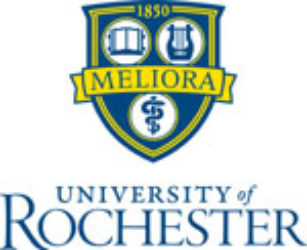WaveFront Sensing for Large Telescopes Tom Zielinski is exploring phase retrieval algorithms for accurately aligning large, segmented space telescopes (such as the James Webb Space Telescope). The algorithms use images of stars to determine the aberrations of the telescope. The emphasis is on making the algorithms more robust in the presence of non-ideal circumstances, such as having to use light from dim or extended stars, or where there is jitter during the exposure time.
3-D Microscopic Imaging Nathan Clark is researching 3-D imaging with a conventional fluorescence microscope. It involves using phase retrieval to characterize the microscope’s aberrations and then fitting a sequence of images gathered at different focal planes to images computed from a model of the 3-D object as see through a computer model of the microscope. This approach allows a 3-D image of the object to be computed while eliminating the contributions to the out-of-focus planes.
Lensless Coherent Imaging Manuel Guizar-Sicairos is currently working on image reconstruction from intensity measurement of non-imaged speckle patterns. The object of interest is illuminated with coherent light, and the back-scattered light is collected with a detector array without any image forming optics. Research is mainly focused on the development of efficient and robust reconstruction algorithms.
Superresolultion Imaging with Structured Illumination Sapna Shroff is working on superresolved imaging of the human retina in vivo using structured illumination. This research encompasses theoretical, experimental and post-processing aspects involved in obtaining lateral superresolution and axial sectioning using structured illumination. This work includes ophthalmological imaging using adaptive optics flood-illuminated and scanning-confocal retinal imaging systems as well as imaging moving and in vivo objects with a microscope.
Imaging through Atmospheric Turbulence with Multiple Phase Screens Abbie Tippie is working on algorithms and experiments to correct the anisoplanatic (spatially variant) image blurring that occurs with atmospheric turbulence, particularly for horizontal paths. The object is illuminated with a laser and digital holography (or heterodyne array) measurements are made, allowing the aberrated field from the object to be sensed. A sharpness maximization algorithm is used to estimate the aberrations in multiple planes and correct the image.
Phase Diversity and Cramer-Rao Bounds for Telescopes Matt Bolcar is researching the use of phase diversity for sensing aberrations in multiple-telescope arrays and segmented-aperture telescopes. This allows the use of images of extended scenes to determine the aberrations in the telescope, either to correct the telescope or to correct the images coming from the telescope. Information-theoretic lower bounds on the errors in this process allow one to determine how well one can do in theory.
